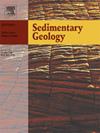晚第四纪南海北部边缘浊积体系的气候强迫
IF 2.9
2区 地球科学
Q1 GEOLOGY
引用次数: 0
摘要
沉积层序中保存的浊积岩是影响陆源沉积物供应和沉积过程的海平面和气候波动的宝贵档案。然而,对浊积系统如何在千年时间尺度上响应外部强迫的复杂相互作用的全面理解仍然有限。利用不同地貌背景下两个沉积物岩心的粒度、地球化学和年代学数据,研究了南海北部边缘浊积岩体系生长对海平面、气候和构造的响应。QDN-2岩芯位于南海西北边缘,记录了两个浊积岩在43ka - 12ka之间沉积,随后在全新世停止活动。相反,位于南海东北部边缘的TXN-1岩芯记录了自12ka以来频繁的浊流。这些对比记录表明,南海北部边缘的浊积体系可以在任何海平面上发育。我们的研究结果表明,尽管海平面和构造作用起作用,但气候成为南海北部浊积体系发展的主要外部强迫。充足的气候引起的泥沙供应补偿了宽大陆架和高海平面截流的影响,为浊流的形成提供了必要的物质基础。陆源沉积物通过浊度流的快速输送有助于在浊积岩中保存这些气候信号。本研究强调了气候强迫在浊积岩沉积模式中的关键作用,甚至在宽大陆架上也是如此,并强调了将气候变率纳入层序地层学解释的重要性。本文章由计算机程序翻译,如有差异,请以英文原文为准。
Climate forcing of turbidite system on the northern South China Sea margin during the Late Quaternary
Turbidites preserved within sedimentary sequences serve as valuable archives of sea-level and climate fluctuations that influence terrigenous sediment supply and depositional processes. However, a comprehensive understanding of how turbidite systems respond to the complex interplay of external forcing on millennial timescales remains limited. Using grain size, geochemical, and chronological data from two sediment cores in different geomorphic settings, we investigate how turbidite system growth responds to sea level, climate and tectonics along the northern South China Sea (SCS) margin. Core QDN-2, located on the northwestern SCS margin, records two turbidites deposited between 43 ka and 12 ka, followed by a cessation of activity during the Holocene. Conversely, core TXN-1 situated on the northeastern SCS margin, documents frequent turbidity currents since 12 ka. These contrasting records demonstrate that turbidite systems on the northern SCS margin can develop at any sea-level. Our findings reveal that while sea level and tectonics play a role, climate emerges as the dominant external forcing on turbidite system development in the northern SCS. Sufficient climate-induced sediment supply compensates for the influence of interception by the wide shelf and high sea level, providing the necessary material basis for the initiation of turbidity currents. The rapid delivery of terrigenous sediments through turbidity currents facilitates the preservation of these climatic signals within the turbidites. This study highlights the crucial role of climate forcing in turbidite depositional patterns, even on the wide continental shelves, and emphasizes the importance of incorporating climate variability into sequence stratigraphic interpretations.
求助全文
通过发布文献求助,成功后即可免费获取论文全文。
去求助
来源期刊

Sedimentary Geology
地学-地质学
CiteScore
5.10
自引率
7.10%
发文量
133
审稿时长
32 days
期刊介绍:
Sedimentary Geology is a journal that rapidly publishes high quality, original research and review papers that cover all aspects of sediments and sedimentary rocks at all spatial and temporal scales. Submitted papers must make a significant contribution to the field of study and must place the research in a broad context, so that it is of interest to the diverse, international readership of the journal. Papers that are largely descriptive in nature, of limited scope or local geographical significance, or based on limited data will not be considered for publication.
 求助内容:
求助内容: 应助结果提醒方式:
应助结果提醒方式:


